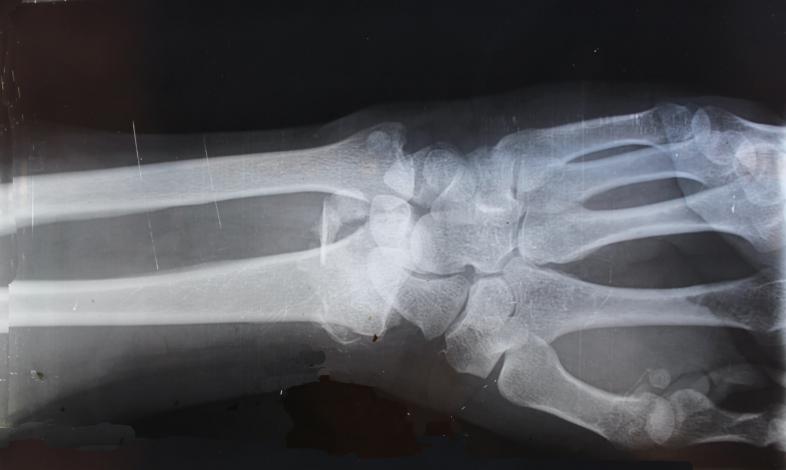A Guide to Broken Bones in Kids
This post contains references to products from one or more of our advertisers. We may receive compensation when you click on links to those products. Terms apply to the offers listed on this page. For an explanation of our Advertising Policy, visit this page.
Stay calm and breathe. It’s a broken bone.
When your child gets hurt, it is quite natural to worry or want your child to be alright. Often you’ll feel bad for them if they’ve really hurt themselves - empathy for your child is a natural response. However, when your child seriously injures themselves that they need to go to the hospital, it’s not unusual to start freaking out.
If your child breaks a bone in their body, it will be natural for you to start worrying about them, especially if you can see the break of the bone. When this happens, you need to do your very best to stay as calm as possible. For some parents, this will be extremely difficult, while others may have no real issue with this.
Your child is going through immense pain as part of a broken bone in their body. The last thing that they need is one of their parents going crazy at the same time. Your child needs something the exact opposite of that - calm and reassurance. If you need to scream inside of yourself for your child, that’s fine. However, you should do everything you can to clear your mind, keep calm, and take action.
What To Do
A broken bone requires a trip to the emergency room so that they can get an x-ray completed. In order to make that happen, you need to figure out how you’re getting them there safely. Depending on the bone and the situation, this may be easier than at other times.
Do not try to move or touch the broken bone. While you may need to move the body part, do everything you can to not touch it - you don’t want to make it worse. If you’re a long way from a hospital, then you may need to splint the bone, but generally that shouldn’t be required. If your child has a broken leg, and can’t sit in the car normally, consider having them sit in the far back of the car laying down. If there’s not a way to get in the car, then call an ambulance. Most younger kids should be able to sit in the back of a car - only when your child is in their teenage years might you expect to need an ambulance.
Drive quickly but calmly to the hospital. You shouldn’t be speeding through red lights and making other poor traffic maneuvers to get your child to the hospital. Doing so only makes it more dangerous for you and your child. Get your child to the hospital safely so that the professionals can do their job.
What To Expect at the Hospital
You’re likely going to have to wait to get in and get taken care of at the hospital. Unless the break is life threatening, you’ll be sitting and waiting with your child. Pull out your phone, or something else that can help keep them distracted. Unless you’re in the hospital often, your child will likely be interested in everything going around them, and they may be scared as well.
After you fill out the paperwork (because of course you’ll have to) and wait until you can be seen, you’re going to be taken back to a room where a nurse will ask several questions about what happened, how did the child break the bone, and other basic medical questions.
You’ll then sit in the room for what will feel like way too long (because you’re likely still very worried about your child), before the doctor will come in. The doctor will ask a lot of the same questions about how the bone was broken, and then they’ll take a look at the actual break. The doctor will then request that an x-ray be taken and the nurse will bring in the x-ray machine to complete it.
You’ll likely wait a few minutes again as they look over the x-rays, determine the seriousness and next steps. Assuming a standard break, you can expect to get a splint on the broken bone, and be sent back to the hospital to get a cast in the next week or so. If it’s more serious, you may be headed for surgery - how and when this happens will depend on the seriousness of the break.
After the Emergency Room
Assuming a standard break, you’ll be headed back to get the actual cast on within a week or so. They’ll get to choose a color for their cast, and the process is generally pretty quick. You’ll have scheduled a time in advance for when you’ll be getting the cast on, so they’ll simply be taking off the splint, and putting the cast on.
With the splint, you absolutely cannot get it wet - it’s not meant to get wet and you’ll be headed back to the hospital if you do. Don’t get it wet. The cast will generally be able to go in the water. They will let you know the details when you go to get it on. While you don’t want to get it wet right before bed, it’ll take a couple of hours to fully dry out. We chose to keep the cast dry simply because we didn’t want to have to deal with a wet and gross cast, but it is possible to let it get wet.
Obviously signing the cast is a right of passage with a broken bone - your child will enjoy that. Also, it’s very likely that your child will start using the broken bone again well before the cast comes off. This is totally normal. Our son broke his leg and was already walking on the cast within a couple of weeks of having the cast on. Your doctor will tell you if you are allowed to use the broken bone area or not - they’ll generally cast it in a way to make it really hard if not impossible if so.
Conclusion
A child having a broken bone can be scary and lead to a bunch of nervousness. Try your best to stay calm throughout, and listen to the medical professionals.





